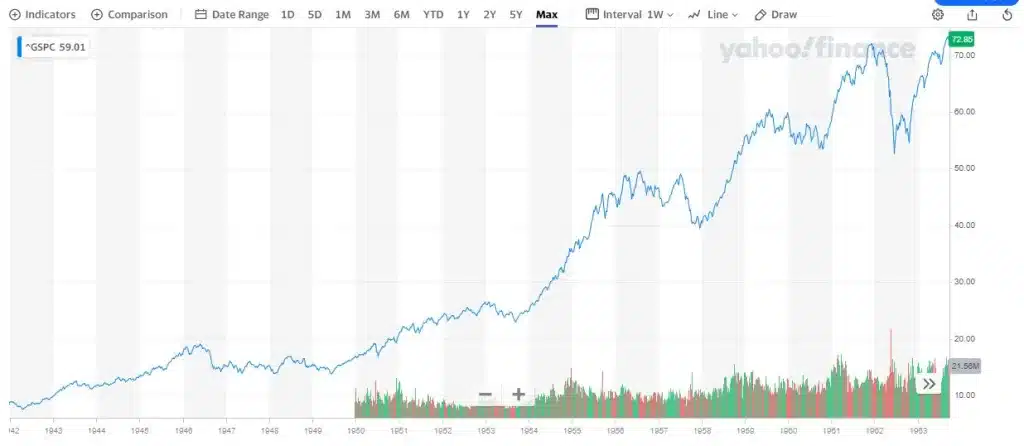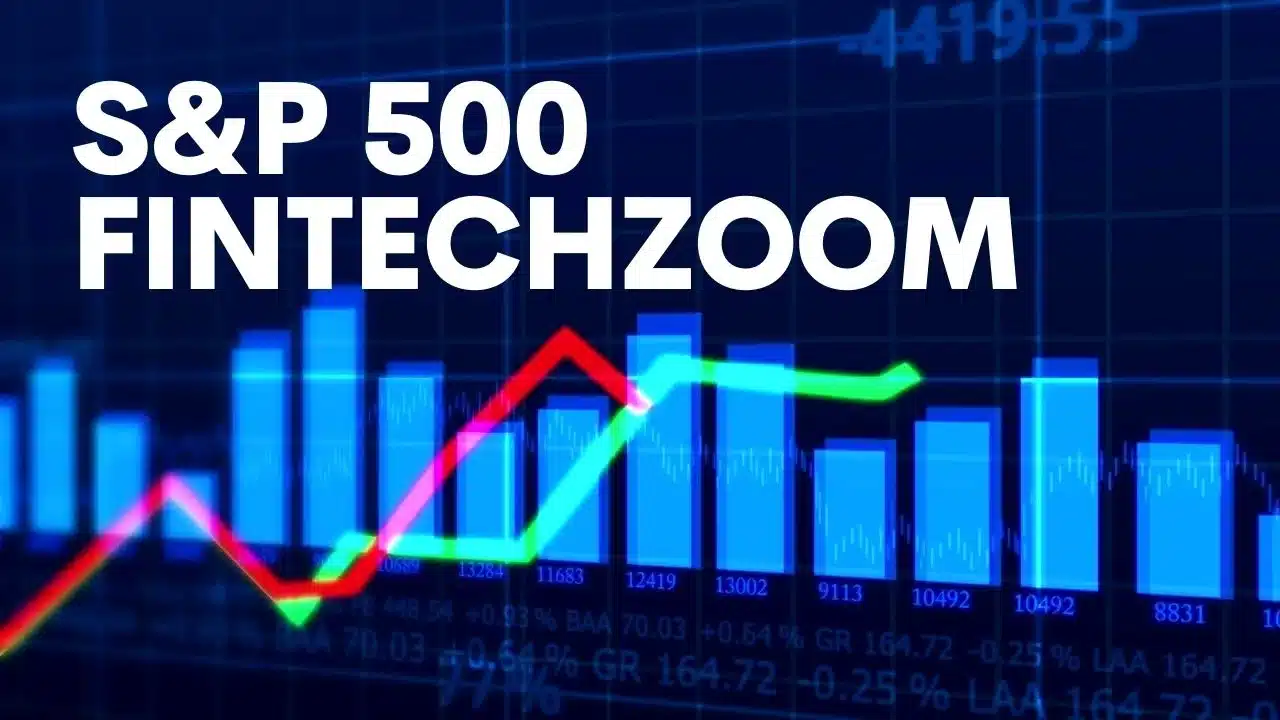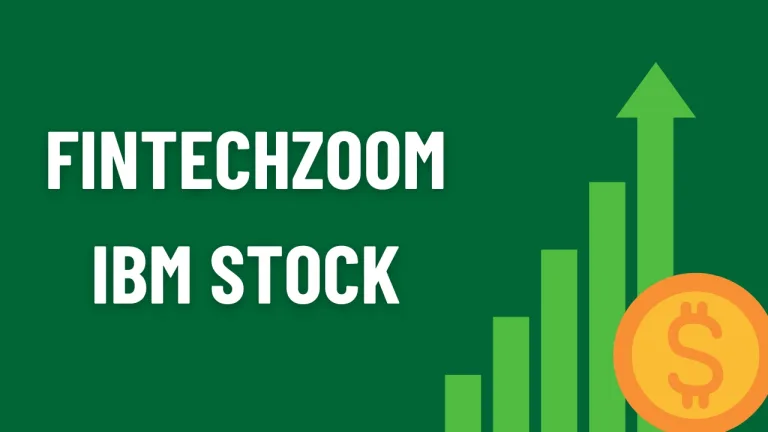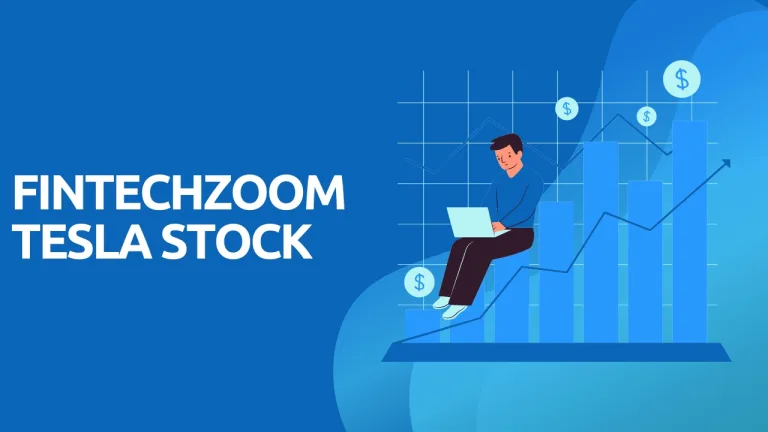Fintechzoom SP500: Solid Strategies for S&P 500 Success
The Standard & Poor’s 500, or S&P 500, stands as a critical barometer of U.S. economic health, representing the market performance of 500 leading companies publicly traded on American stock exchanges. This index is not just a measure of stock performance; it reflects broader economic trends, influenced by global economic conditions, corporate earnings, and geopolitical events. As such, the S&P 500 is a preferred index for investors looking to gauge the market climate and adjust their investment strategies accordingly. In this article on Fintechzoom, we’ll analyze SP500 performance and future outlook.
The significance of the S&P 500 extends beyond mere numbers; it encapsulates the pulse of the U.S. economy, showcasing how top companies navigate through economic cycles. Its movements offer insights into investor confidence, sector strength, and overall economic momentum. As we move through 2024, understanding the analysis of the S&P 500 is essential for anyone engaged in financial markets, whether they are seasoned investors or newcomers.
Overview of the S&P 500
Composition of the Index
| Sector | Weight in S&P 500 | Leading Companies |
|---|---|---|
| Information Technology | 26% | Apple, Microsoft, Nvidia |
| Healthcare | 14.5% | UnitedHealth Group, Pfizer |
| Financials | 12.9% | Berkshire Hathaway, JPMorgan Chase |
| Consumer Discretionary | 9.9% | Amazon, Tesla |
| Industrials | 8.6% | Boeing, Honeywell |
| Communication Services | 8.2% | Facebook, Google |
| Consumer Staples | 7.4% | Procter & Gamble, Coca-Cola |
| Energy | 4.5% | ExxonMobil, Chevron |
| Utilities | 2.9% | Duke Energy, Southern Company |
| Materials | 2.6% | DuPont, Dow |
| Real Estate | 2.5% | Simon Property Group, American Tower |
The S&P 500 is celebrated for its diverse representation of the U.S. economy, encompassing a broad array of sectors. The index’s composition is a mirror of economic strength and vulnerabilities across industries. As of 2024, the Information Technology sector continues to lead the index by weight, representing over 26% of the total. Following closely are Healthcare and Financials, highlighting the critical role these sectors play in the U.S. economy. This sectoral distribution underscores the strategic importance of technology and health services in driving economic growth and innovation.
The inclusion of companies in the S&P 500 is a testament to their influence and operational success. Major names like Apple, Microsoft, and Nvidia not only dominate the technology landscape but also significantly sway the index’s performance. These companies are pivotal in shaping market trends, and their stock movements are often seen as indicators of broader sectoral health.
Historical Performance

The S&P 500 has a storied history of reflecting the economic and market conditions of its time. Over the past decades, the index has seen periods of robust growth, market corrections, and recovery cycles. The historical data reveals that the S&P 500 has consistently provided a reliable gauge for the overall market sentiment and economic direction. Notably, in years following economic downturns, the index often recovers, capturing the resilience and dynamic nature of the U.S. economy.
For instance, after the market upheavals seen in previous years, 2024 has shown a trend toward stabilization and cautious optimism among investors. Fintechzoom closely monitors these historical trends of SP500 to predict future movements and align their investment strategies accordingly. The ability of the S&P 500 to bounce back from lows and reach new highs is a pattern that reinforces its utility as a fundamental investment benchmark.
Fintechzoom SP500 2024 Market Analysis
Current Market Trends
As we progress through 2024, the S&P 500 is influenced by a myriad of factors ranging from macroeconomic indicators to Federal Reserve policies. Currently, the market is navigating a landscape shaped by lingering inflation concerns, adjustments in interest rates, and the ongoing global economic recovery. Analysts are particularly focused on the Federal Reserve’s decisions regarding interest rates, which are pivotal in shaping the investment environment. Historically, lower interest rates have buoyed the stock market, and any shifts in this policy are closely watched for their potential impact on the index.
The international scene also plays a crucial role, with geopolitical tensions and trade agreements affecting market sentiment and causing fluctuations in the S&P 500. For instance, any escalation in trade tensions between major economies can trigger volatility, while resolutions tend to soothe the market.
Predictions and Forecasts
Fintechzoom outlook for the SP500 by the end of 2024 varies, with most firms anticipating moderate growth, contingent on a stable economic backdrop. Investment banks like JPMorgan and Morgan Stanley have issued forecasts suggesting a cautiously optimistic scenario, where the index could see an upward trajectory if key economic indicators remain favorable. These forecasts incorporate an array of data points, including corporate earnings projections, GDP growth rates, and consumer spending trends.
Moreover, the narrative around the Federal Reserve’s rate decisions is central to these predictions. Analysts argue that if the Fed manages to navigate the tightrope of controlling inflation without stifling growth, the S&P 500 could benefit significantly.
Fintechzoom SP500 Sector-Specific Analysis
Leading Sectors
The Information Technology, Healthcare, and Financial sectors remain the stalwarts of the SP500 in 2024, according to Fintechzoom, collectively constituting more than half of the index’s weight. The Information Technology sector, in particular, continues to exert a significant influence on the index’s performance. Major companies like Apple, Microsoft, and Nvidia not only dominate this sector but also significantly impact the overall market dynamics due to their large market capitalizations and widespread investor interest.
Healthcare has also proven resilient, maintaining steady growth fueled by continuous innovation and an aging global population that drives demand for healthcare services and products. This sector’s stability is often seen as a defensive play in times of economic uncertainty.
The Financial sector has shown robustness amidst fluctuating interest rates, with major entities like Berkshire Hathaway and JPMorgan Chase adapting swiftly to the evolving economic landscape. This sector’s performance is often viewed as a bellwether for economic health, reflecting confidence in financial services and consumer banking.
Emerging Sectors
Emerging sectors within the S&P 500 include renewable energy and technology-driven consumer services, which are gaining traction due to shifts in consumer preferences and regulatory changes. Companies in these sectors are not only capitalizing on technological advancements but are also aligning with global sustainability goals, thereby attracting significant investment.
Renewable energy companies, under the umbrella of both utilities and industrials, are increasingly represented in the index as the world pivots towards sustainable energy solutions. Similarly, technology-driven consumer services, a subsector within Consumer Discretionary, are reshaping how goods and services are delivered, reflecting the growing influence of e-commerce and digital platforms.
Fintechzoom Investment Strategies for SP500
Long-Term Investments
For long-term investors, the S&P 500 offers a variety of strategic avenues, particularly through investing in sectors that demonstrate consistent growth and resilience. Historically, sectors like Healthcare and Consumer Staples are considered safe harbors due to their stable demand irrespective of economic cycles. Investing in index funds or ETFs that track the S&P 500 provides a diversified portfolio inherently, spreading risk across various top-performing sectors.
Moreover, focusing on companies within the S&P 500 that have a strong history of dividend growth can be a prudent strategy. These dividends can provide a steady income stream and potential for reinvestment, contributing to compounding returns over time. For instance, sectors such as Utilities and Consumer Staples often feature companies with high dividend yields and a history of dividend stability.
Short-Term Trading
For traders with a shorter investment horizon, the S&P 500 offers opportunities to capitalize on market volatility through tactical approaches like swing trading. By analyzing market trends and technical indicators, traders can make speculative bets on the short-term movement of the index. Key strategies include leveraging options for hedging and speculation and employing stop-loss orders to manage risks effectively.
It is also crucial for short-term traders to stay informed about upcoming economic data releases, earnings reports, and major geopolitical events, as these can all trigger significant price movements in the S&P 500. By maintaining a pulse on these factors, traders can better position themselves to take advantage of quick shifts in market sentiment.
Risks and Considerations
Investing in the S&P 500, while offering numerous opportunities, also comes with its set of risks and challenges that investors must consider. Understanding these risks is crucial for managing investments effectively and achieving long-term financial goals.
Economic Sensitivity
According to Fintechzoom, the SP500 is highly sensitive to macroeconomic changes. Economic downturns, inflation fluctuations, and changes in interest rates can all profoundly impact the index. For example, an unexpected hike in interest rates often leads to a decrease in stock prices as borrowing costs rise, potentially slowing economic growth. Conversely, during periods of economic recovery, the S&P 500 typically performs well, reflecting the improved business confidence and consumer spending.
Market Volatility
Volatility is an inherent part of investing in the stock market. The S&P 500 can experience significant fluctuations based on geopolitical events, economic data releases, and changes in market sentiment. These fluctuations can be particularly challenging for short-term traders who might see large gains or losses within very short periods. Long-term investors, while generally less affected by short-term volatility, still need to be aware of the broader market cycles that could affect their portfolio’s value.
Sector Concentration Risk
While diversification across 500 companies may seem extensive, the S&P 500’s heavy weighting towards certain sectors, such as Technology and Financials, introduces concentration risk. Significant downturns in these sectors can disproportionately impact the overall index performance. For instance, a tech sell-off can drag down the index even if other sectors perform well.
Systemic Risks
Investors must also be wary of systemic risks that can arise from major disruptions in financial markets or the economy. Events like the financial crisis of 2008 or the COVID-19 pandemic in 2020 demonstrate how interconnected and vulnerable global markets can be to unexpected shocks. Such events can lead to rapid declines in market values and can affect nearly all assets correlated with the market.
To mitigate these risks, investors should consider diversifying their portfolios beyond just the S&P 500, including international assets, different asset classes like bonds and real estate, and potentially alternative investments. Additionally, staying informed about financial news and maintaining a disciplined investment strategy with regular reviews and adjustments can help navigate through market uncertainties.
Frequently Asked Questions (F.A.Q)
When is the best time to buy and sell SP 500 stocks according to Fintechzoom?
Timing the market can be challenging, even for seasoned investors. Generally, the best time to buy is during market corrections when stock prices are lower, offering a potentially higher return on investment as the market recovers. Selling, on the other hand, might be considered when the market is peaking, especially if there are signs of overvaluation or impending economic downturns. However, for long-term investors, consistently investing through dollar-cost averaging (purchasing fixed dollar amounts regularly regardless of the stock price) reduces the risk of timing the market incorrectly.
How can I diversify my investment in the S&P 500?
Diversification within the S&P 500 involves investing across different sectors and not overly concentrating on one. Additionally, investors can diversify by including international stocks, bonds, real estate investments, and more in their portfolios. This strategy helps mitigate risk and smooth out returns over time, as different asset classes often perform differently under various economic conditions.
What are the key market signals to understand when investing in the S&P 500?
Key market signals include economic indicators such as GDP growth rates, unemployment rates, inflation data, and consumer spending. Market sentiment indicators, technical analysis trends like moving averages and resistance levels, and the performance of leading and lagging sectors also provide valuable insights. Keeping an eye on these indicators can help investors make informed decisions about their S&P 500 investments.
Wrapping Up
In this comprehensive analysis of the S&P 500, we’ve covered its composition, historical performance, current market trends, sector-specific insights, investment strategies, and the associated risks. Understanding these elements is vital for anyone looking to invest in the S&P 500, whether you’re a novice needing a safe entry point or an experienced investor strategizing for maximum returns. As always, staying informed and adaptable to market changes remains key in navigating the complexities of investing in one of the world’s most significant financial indices.







![Fintechzoom Bitcoin Price Analysis and Predictions [2024]](https://thefintechzoom.com/wp-content/uploads/2024/04/Fintechzoom-Bitcoin-Price-768x432.webp)